QuestionI recently purchased a 6 year old Standardbred mare. She is great except for one thing: When I attempt to lead her back into her stall, she always bolts in.
Thank you!
Answer
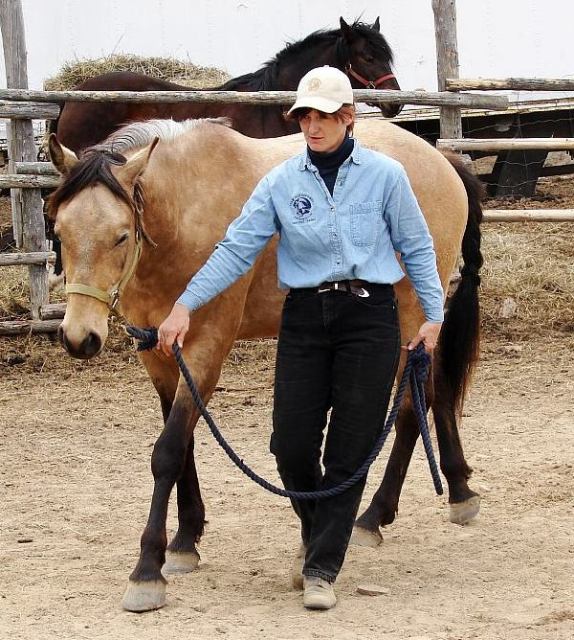 In Hand
In Hand
Hi, Cheryl ... Your mare may be worried about going through the stall door due to a past experience where she banged herself (that door bites!) She could be anxious to get into her stall because that's where she gets fed. Or previous handling may have created stress by how she was put into her stall. Whatever the cause, to help her walk into her stall calmly requires that you help her feel safe with you and in that space. You will earn her trust and respect so that you can bring her into a shape of calmness and she will not push through your space.
In horses, shape of body equals state of mind. An anxious or stressed horse will have a high head, braced back, be bent away from a perceived potential danger (or higher ranking herd mate),scissored feet and have adrenaline turned on. The body is shaped so that the horse is ready to flee. A calm horse has a low or level neck and head, soft back, stands square and the adrenaline flow is turned off. In order to help your horse feel mentally calm, you can bring her into the shape of the calm horse. Start asking her for this posture when she is not stressed and as you walk her towards her stall. At the first sign that she is getting anxious (head goes higher, she tenses or walks faster, etc.), ask her to lower her head by gently flexing on your lead rope. You need to have contact on the rope, your hand centred under her neck, and using a gentle rocking and downwards pressure (not a pull or a jerk) massage the tension out of her poll. Time the rocking with the natural swing of her head. The horse's head swings right as the right front foot comest forward and left as the left front foot comes forward.
If she starts walking faster & pulling you do not pull on the rope to ask her to stop. First, try a half halt - as you would do when you are in the saddle - by pausing your movement and blocking (not pulling) on the lead rope for one step. If she does not respond to the half halt, then ask her to turn into a very small circle and keep her moving on that circle until you feel her soften. To make the small circle, you need to be standing at her shoulder; pivot on your left foot; reach back with your left hand to push her hips out. Do your best to keep her nose in line with the centre of her chest. If you pull her head in towards you, she will be thrown off balance and will resist the movement you are asking her to make. As soon as you feel her soften and slow down, continue walking towards the stall. You may have to go up and down the aisle a few times doing this exercise until she remains calm and will respond to your half halt as you approach her stall.
Once she is listening well and remaining calm as you walk down the aisle towards her stall, then you can try taking her to her stall. If she pulls, puts her head up and seems at all anxious, simply change your mind about going to the stall. Turn her again by pushing her hips out and just walk away from the stall back down the aisle. When she remains calm and listening to you when you turn towards the stall ask her to stop before going through the door. One of two things will happen at this point:
1) she stops and waits for you to tell her what to do next. You can praise her then turn and walk away from the stall or walk her into the stall and then walk right back out again.
2) she barges through you rushing into the stall. As she goes through, open your hand on your lead rope so it slides through your hand and step to the side away from her so that you don't get stepped on your pushed into the wall. A long cotton lead rope is best for this exercise. Once her hips are past the door, close your hand on the rope, push her hips away from you to turn her head towards you and then walk her right back out of the stall. Go back to leading her in contact from her shoulder and start the exercise again - walking her down the aisle asking her to lower her head, testing how well she is listening to your half halt, and asking her stop and stand quietly for a few seconds before walking off again.
Changing a pattern of behaviour requires taking the time to work on it, being consistent and remaining calm at all times. Remember that her behaviour is a habit that has developed out of some level of stress or anxiety and she needs you to help her feel safe enough that she can let that anxiety go.


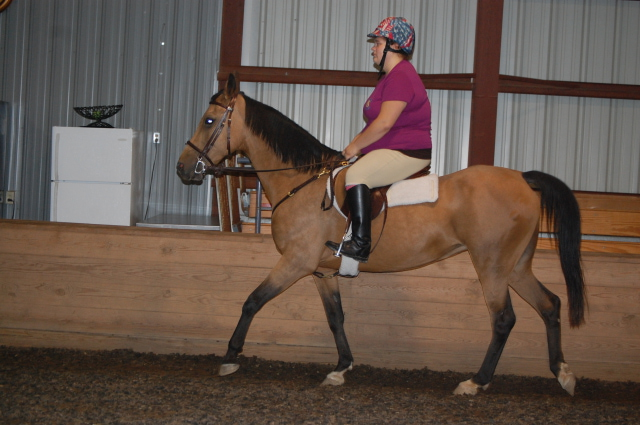 BIG Problem with half arab
QuestionPandora English
Pandora
QUESTION:
BIG Problem with half arab
QuestionPandora English
Pandora
QUESTION:
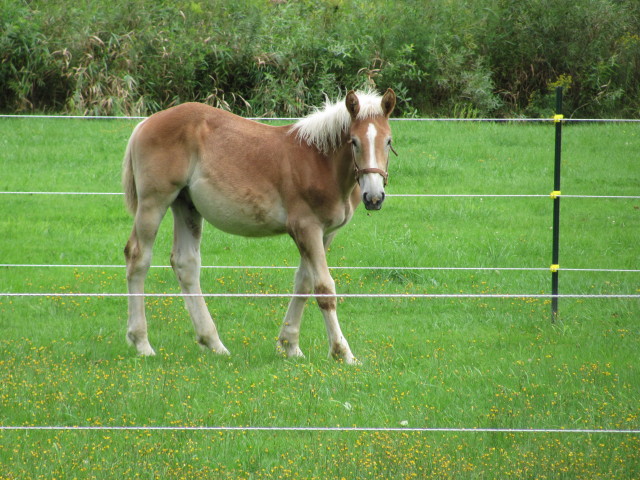 our new weanling
QuestionOllie
QUESTION: Hi there,
I recently pur
our new weanling
QuestionOllie
QUESTION: Hi there,
I recently pur
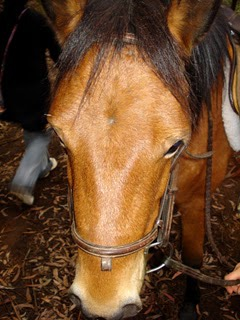 soft face of a horse
Question
soft face
hello maam, what does soft fa
soft face of a horse
Question
soft face
hello maam, what does soft fa
 jaggery good for horses??
Question
jaggery
hello sir, i believe that jaggery is g
jaggery good for horses??
Question
jaggery
hello sir, i believe that jaggery is g
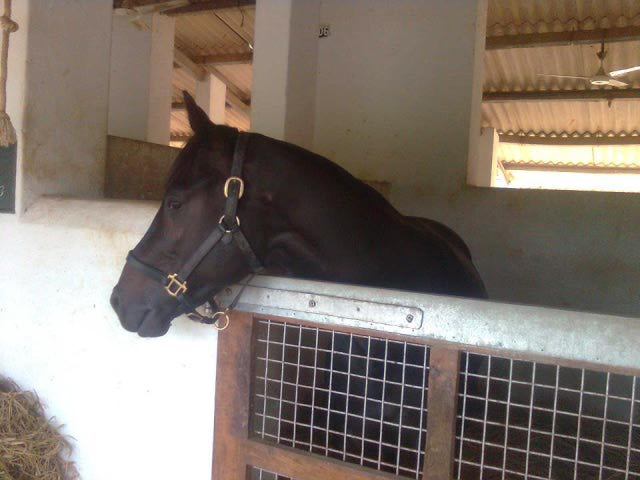 turning the face towards wall
Question
shy horse
hello maam, when i approache
turning the face towards wall
Question
shy horse
hello maam, when i approache